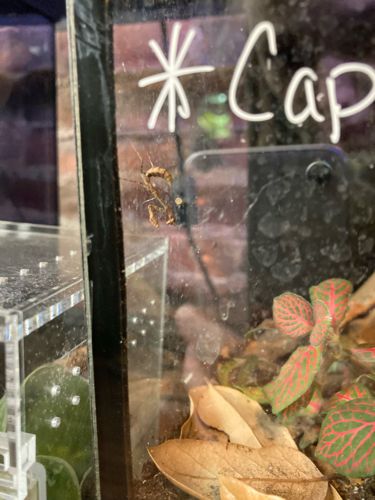Cockroach Nymph (likely German or Brown-banded)
Scientific Name: Blattella germanica or Supella longipalpa (identification uncertain without clearer view)
Order & Family: Blattodea, Ectobiidae (for German/Brown-banded)
Size: 3-15 mm (nymphs are smaller than adults, which range from 10-15mm for German, and 10-14mm for Brown-banded cockroaches)

Natural Habitat
Indoors, preferring warm, humid areas close to food and water sources. Often found in kitchens, bathrooms, and food preparation areas. Can also be found behind electrical outlets, under sinks, and in cracks/crevices.
Diet & Feeding
Omnivorous scavengers. They will eat almost anything, including food scraps, grease, pet food, crumbs, starch, glue, book bindings, and even soap.
Behavior Patterns
Nocturnal; they are most active at night, foraging for food and water. They are typically social insects, living in groups. Nymphs undergo several molts before reaching adulthood. They are highly adaptable and can reproduce quickly.
Risks & Benefits
Potential risks: Known carriers of pathogens that can cause various diseases, trigger allergies and asthma attacks, contaminate food and surfaces, and cause a general nuisance due to their presence. They have no known benefits to humans in an indoor environment.
Identified on: 11/7/2025